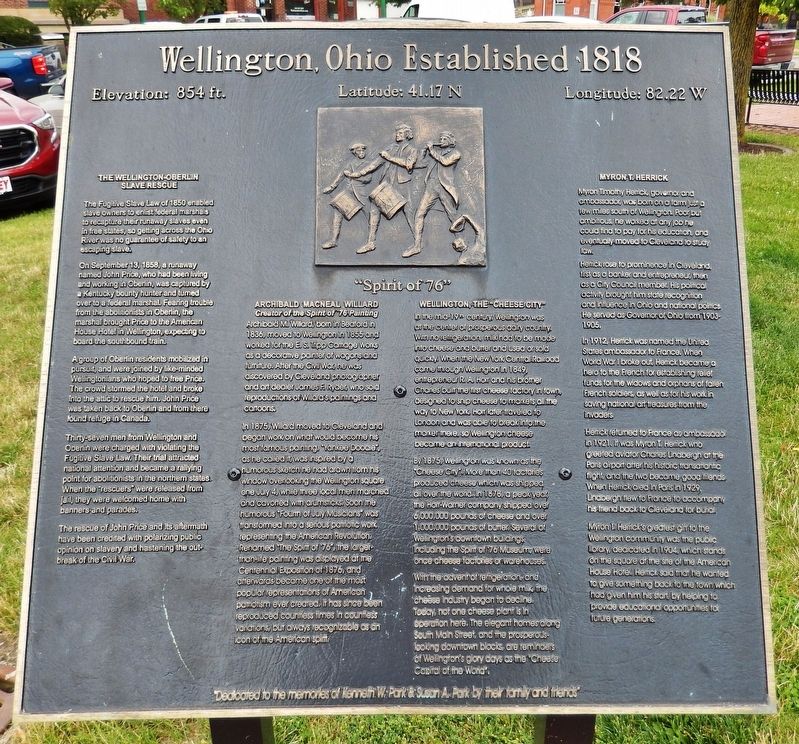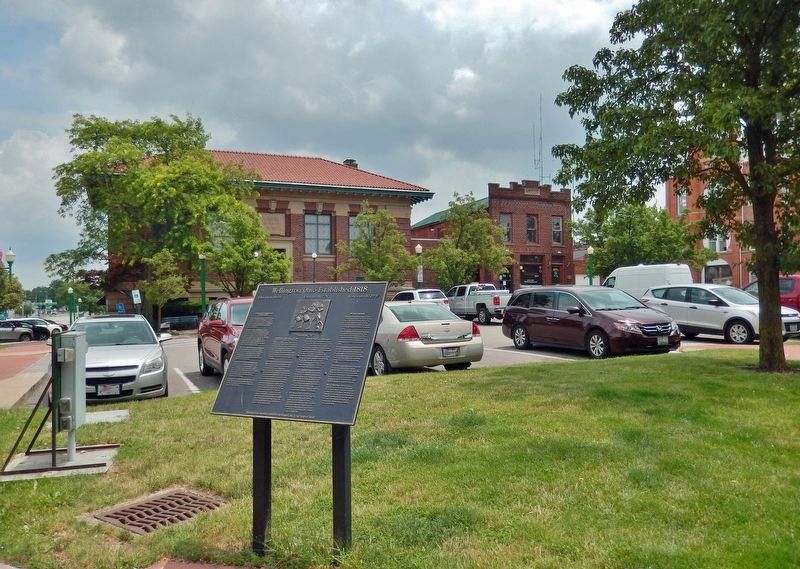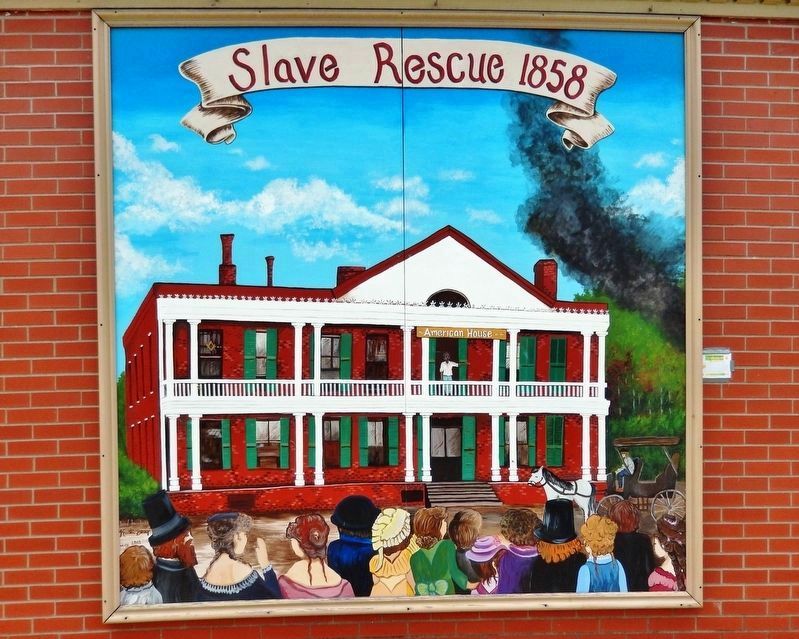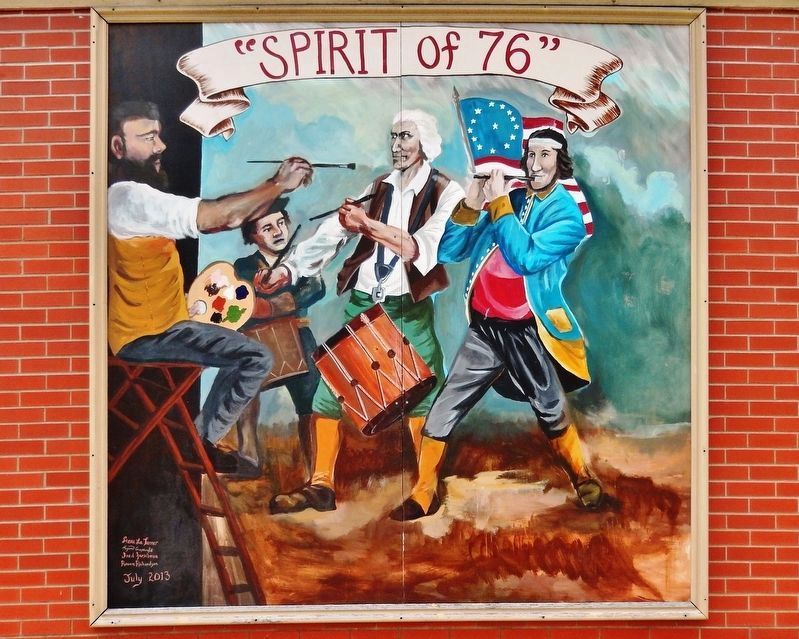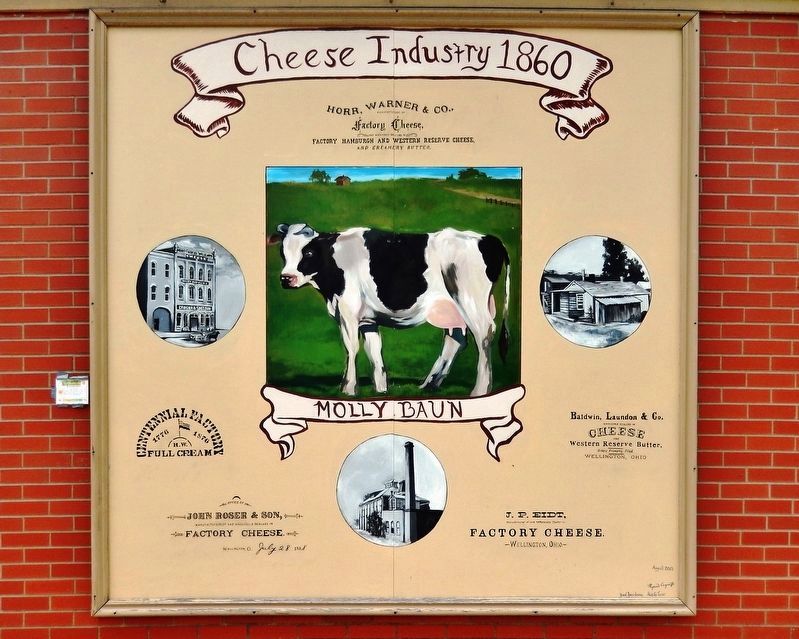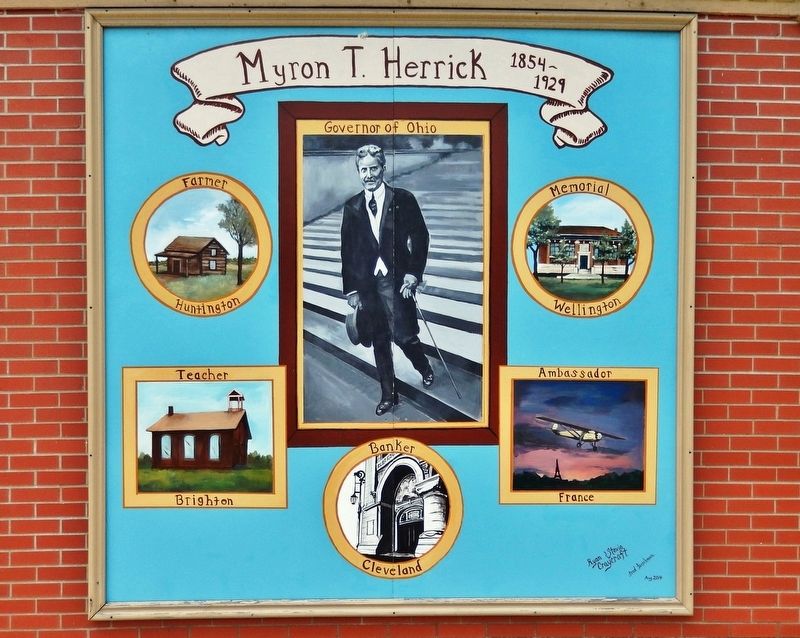Wellington in Lorain County, Ohio — The American Midwest (Great Lakes)
Wellington, Ohio Established 1818
Elevation: 854 ft. • Latitude: 41.17 N • Longitude: 82.22 W
The Wellington-Oberlin Slave Rescue
The Fugitive Slave Law of 1850 enabled slave owners to enlist federal marshals to recapture their runaway slaves even in free states, so getting across the Ohio River was no guarantee of safety to an escaping slave.
On September 13, 1858, a runaway named John Price, who had been living and working in Oberlin, was captured by a Kentucky bounty hunter and turned over to a federal marshal. Fearing trouble from the abolitionists in Oberlin, the marshal brought Price to the American House Hotel in Wellington, expecting to board the southbound train.
A group of Oberlin residents mobilized in pursuit, and were joined by like-minded Wellingtonians who hoped to free Price. The crowd stormed the hotel and broke into the attic to rescue him. John Price was taken back to Oberlin and from there found refuge in Canada.
Thirty-seven men from Wellington and Oberlin were charged with violating the Fugitive Slave Law. Their trial attracted national attention and became a rallying point for abolitionists in the northern states. When the “rescuers” were released from jail, they were welcomed home with banners and parades.
The rescue of John Price and its aftermath have been credited with polarizing public opinion on slavery and hastening the outbreak of the Civil War.
Archibald MacNeal Willard
Creator of the Spirit of ’76 Painting
Archibald M. Willard, born in Bedford in 1836, moved to Wellington in 1855 and worked for the E. S. Tripp Carriage Works as a decorative painter of wagons and furniture. After the Civil War, he was discovered by Cleveland photographer and art dealer James F. Ryder, who sold reproductions of Willard’s paintings and cartoons.
In 1875, Willard moved to Cleveland an began work on what would become his most famous painting. “Yankee Doodle,” as he called it, was inspired by a humorous sketch he had drawn from his window overlooking the Wellington square one July 4, while three local men marched and cavorted with drumsticks. Soon the humorous “Fourth of July Musicians” was transformed into a serious patriotic work representing the American Revolution. Renamed “The Spirit of ‘76”, the larger-than-life painting was displayed at the Centennial Exposition of 1876, and afterwards became one of the most popular representations of American patriotism ever created. It has since been reproduced countless times in countless variations, but always recognizable as an icon of the American spirit.
Wellington, the “Cheese City”
In the mid-19th century, Wellington was at the center of prosperous dairy country. With no refrigeration, milk had to be made into cheese and butter and used or sold quickly. When
the New York Central Railroad came through Wellington in 1849, entrepreneur R. A. Horr and his brother Charles built the first cheese factory in town, designed to ship cheese to markets all the way to New York. Horr later traveled to London and was able to break into the market there, so Wellington cheese became an international product.
By 1875, Wellington was known as the “Cheese City”. More than 40 factories produced cheese which was shipped all over the world. In 1878, a peak year, the Horr-Warner company shipped over 6,000,000 pounds of cheese and over 1,000,000 pounds of butter. Several of Wellington’s downtown buildings, including the Spirit of ’76 Museum, were once cheese factories or warehouses.
With the advent of refrigeration, and increasing demand for whole milk, the cheese industry began to decline. Today, not one cheese plant is in operation here. The elegant homes along South Main Street, and the prosperous-looking downtown blocks, are reminders of Wellington’s glory days as the “Cheese Capitol of the World”.
Myron T. Herrick
Myron Timothy Herrick, governor and ambassador, was born on a farm just a few miles south of Wellington. Poor but ambitious, he worked at any job he could find to pay for his education, and eventually moved to Cleveland to study law.
Herrick rose to prominence in Cleveland, first as a banker and entrepreneur,
then as a City Council member. His political activity brought him state recognition and influence in Ohio and national politics. He served as Governor of Ohio from 1903-1905.
In 1912, Herrick was named the United States ambassador to France. When World War I broke out, Herrick became a hero to the French for establishing relief funds for the widows and orphans of fallen French soldiers, as well as for his work in saving national art treasures from the invaders.
Herrick returned to France as ambassador in 1921. It was Myron T. Herrick who greeted aviator Charles Lindbergh at the Paris airport after his historic transatlantic flight, and the two became good friends. When Herrick died in Paris in 1929, Lindbergh flew to France to accompany his friend back to Cleveland for burial.
Myron T. Herrick’s greatest gift to the Wellington community was the public library, dedicated in 1904, which stands on the square at the site of the American House Hotel. Herrick said that he wanted to give something back to the town which had given him his start, by helping to provide educational opportunities for future generations.
Topics. This historical marker is listed in these topic lists: Abolition & Underground RR
• Industry & Commerce • Patriots & Patriotism • Railroads & Streetcars. A significant historical year for this entry is 1818.
Location. 41° 10.105′ N, 82° 13.042′ W. Marker is in Wellington, Ohio, in Lorain County. Marker is at the intersection of South Main Street (Ohio Route 58) and East Herrick Avenue (Ohio Route 18), on the right when traveling north on South Main Street. Marker is located beside the sidewalk, at the southeast corner of the intersection. Touch for map. Marker is in this post office area: Wellington OH 44090, United States of America. Touch for directions.
Other nearby markers. At least 8 other markers are within walking distance of this marker. Herrick Memorial Library (within shouting distance of this marker); Wells Building (within shouting distance of this marker); Archibald M. Willard (within shouting distance of this marker); Howk Memorial Park (within shouting distance of this marker); Wellington Town Hall (within shouting distance of this marker); Spirit of ’76 (about 300 feet away, measured in a direct line); Myron T. Herrick (about 300 feet away); First United Methodist Church (about 400 feet away). Touch for a list and map of all markers in Wellington.
Also see . . . Myron T. Herrick.
Because of his prominence within the Republican Party, Presidents William McKinley and Theodore Roosevelt each offered Herrick the position as United States ambassador to Italy. Herrick had turned down both offers. In 1912, President William Howard Taft offered him the ambassadorship to France. This time, Herrick accepted the offer. Herrick remained as French ambassador until November 28, 1914. By this time, Woodrow Wilson had become president, and World War I had begun in Europe. During the war, Herrick continued to serve his country in less official capacities. He was greatly loved by the French people, and the French government awarded him the French Legion of Honor cross.(Submitted on January 30, 2022, by Cosmos Mariner of Cape Canaveral, Florida.)
Credits. This page was last revised on January 30, 2022. It was originally submitted on January 30, 2022, by Cosmos Mariner of Cape Canaveral, Florida. This page has been viewed 209 times since then and 41 times this year. Photos: 1, 2, 3, 4, 5, 6. submitted on January 30, 2022, by Cosmos Mariner of Cape Canaveral, Florida.
